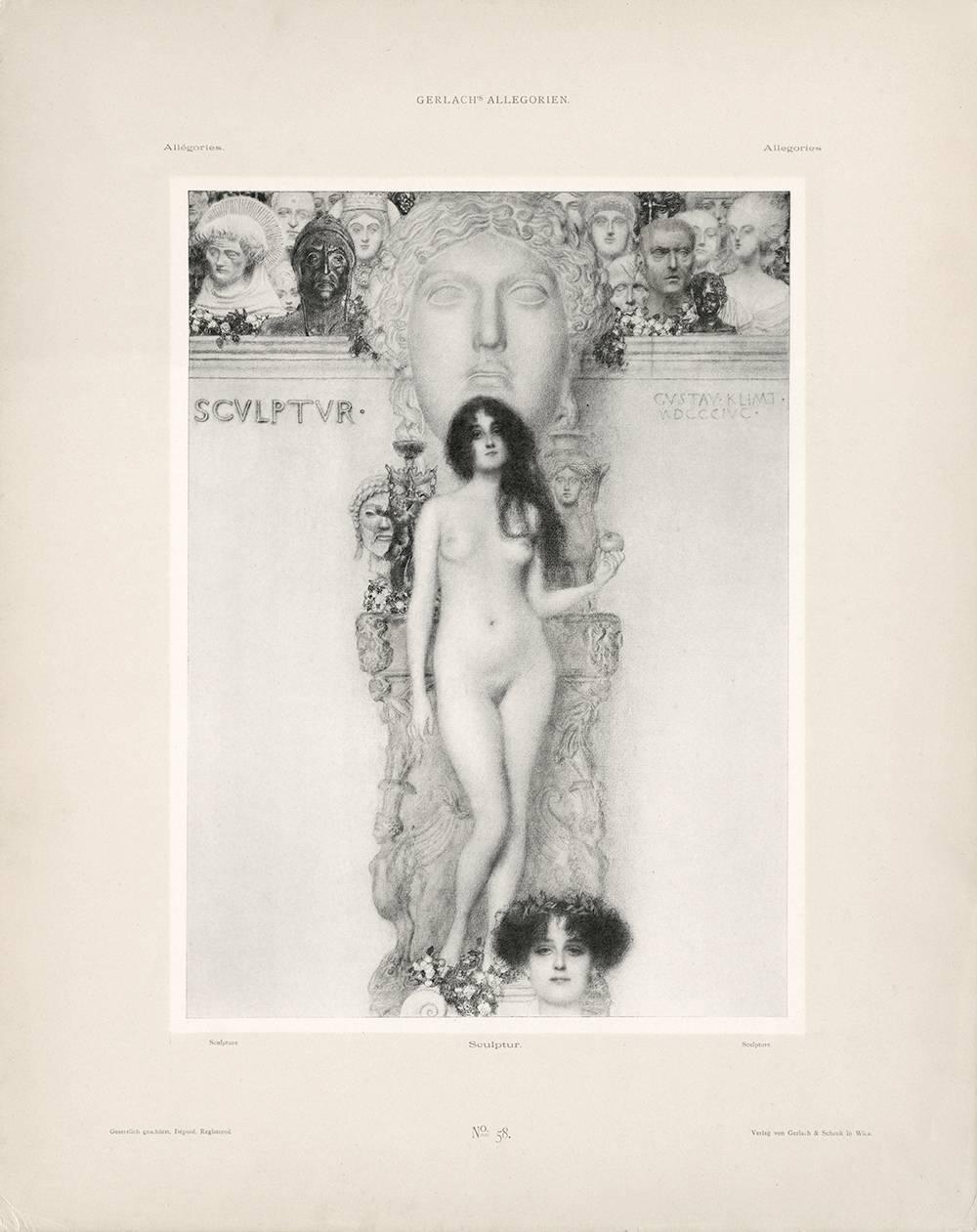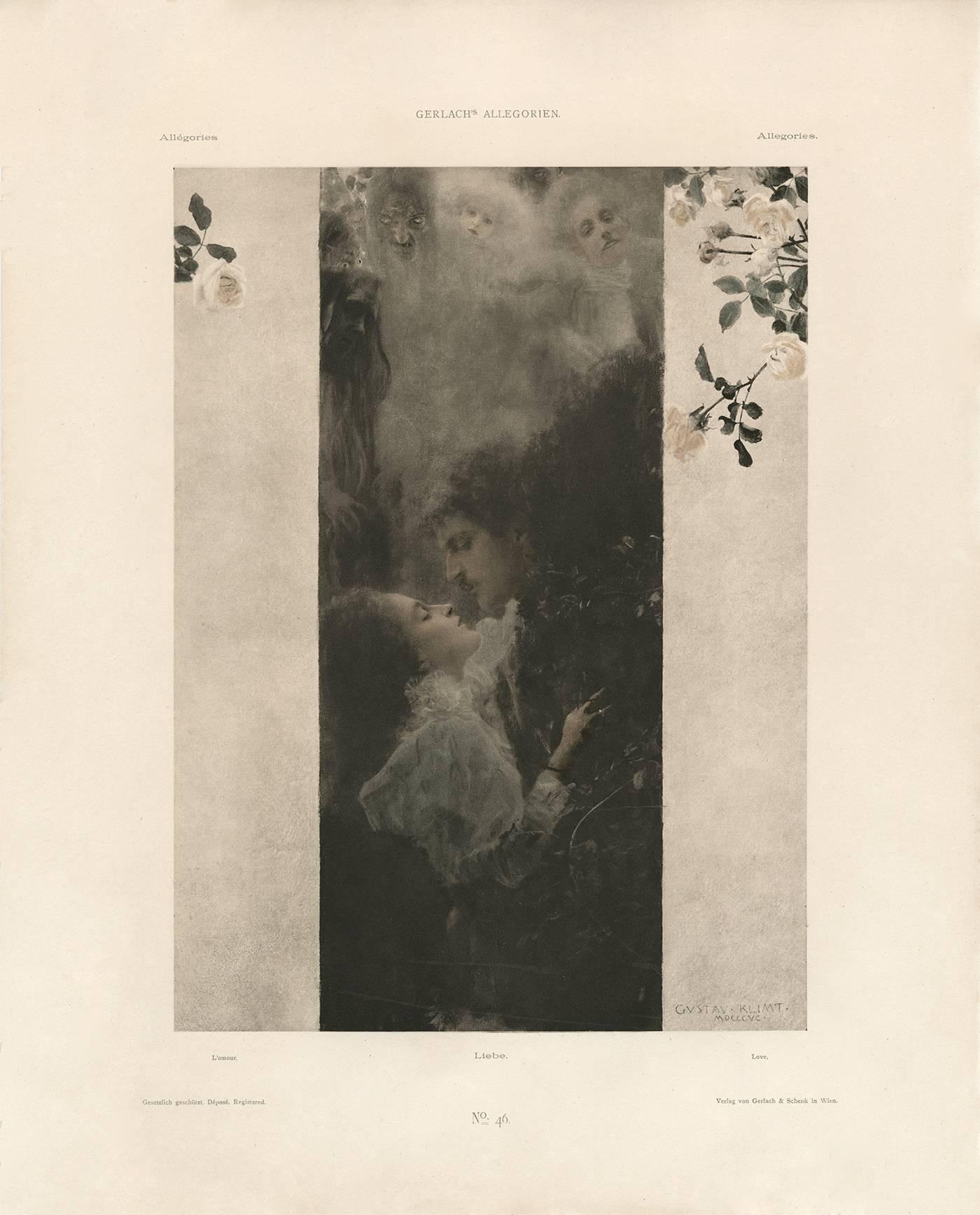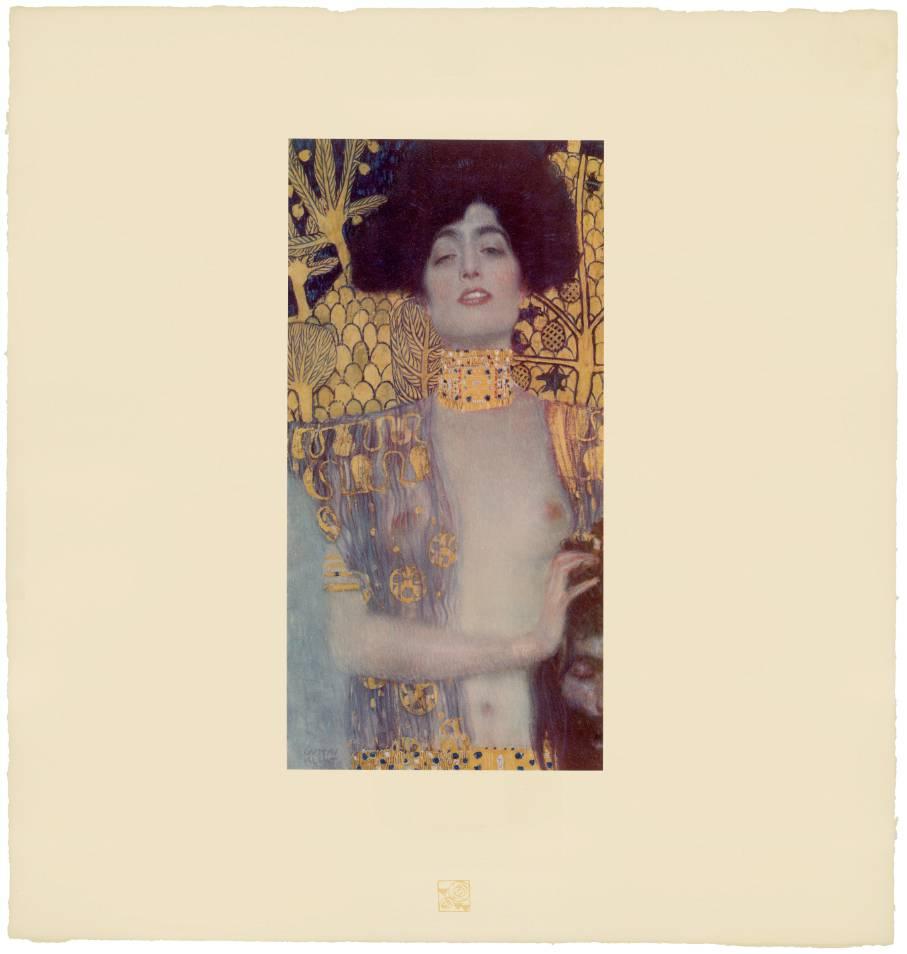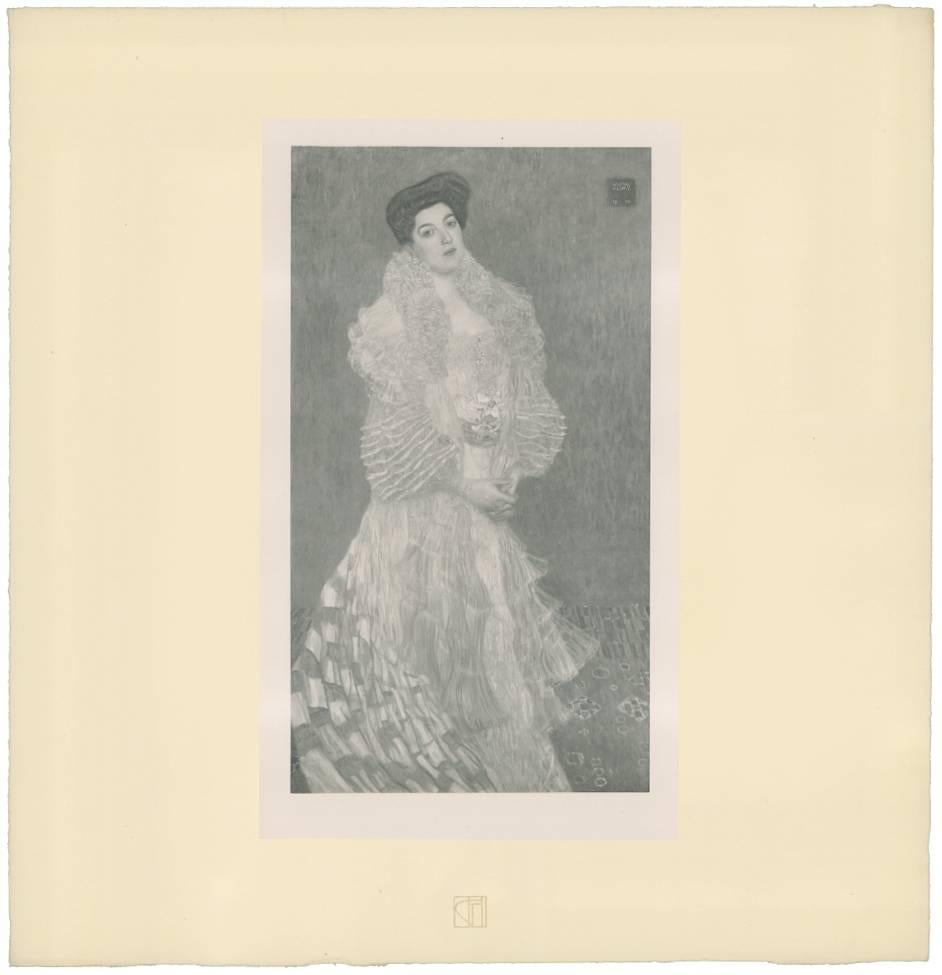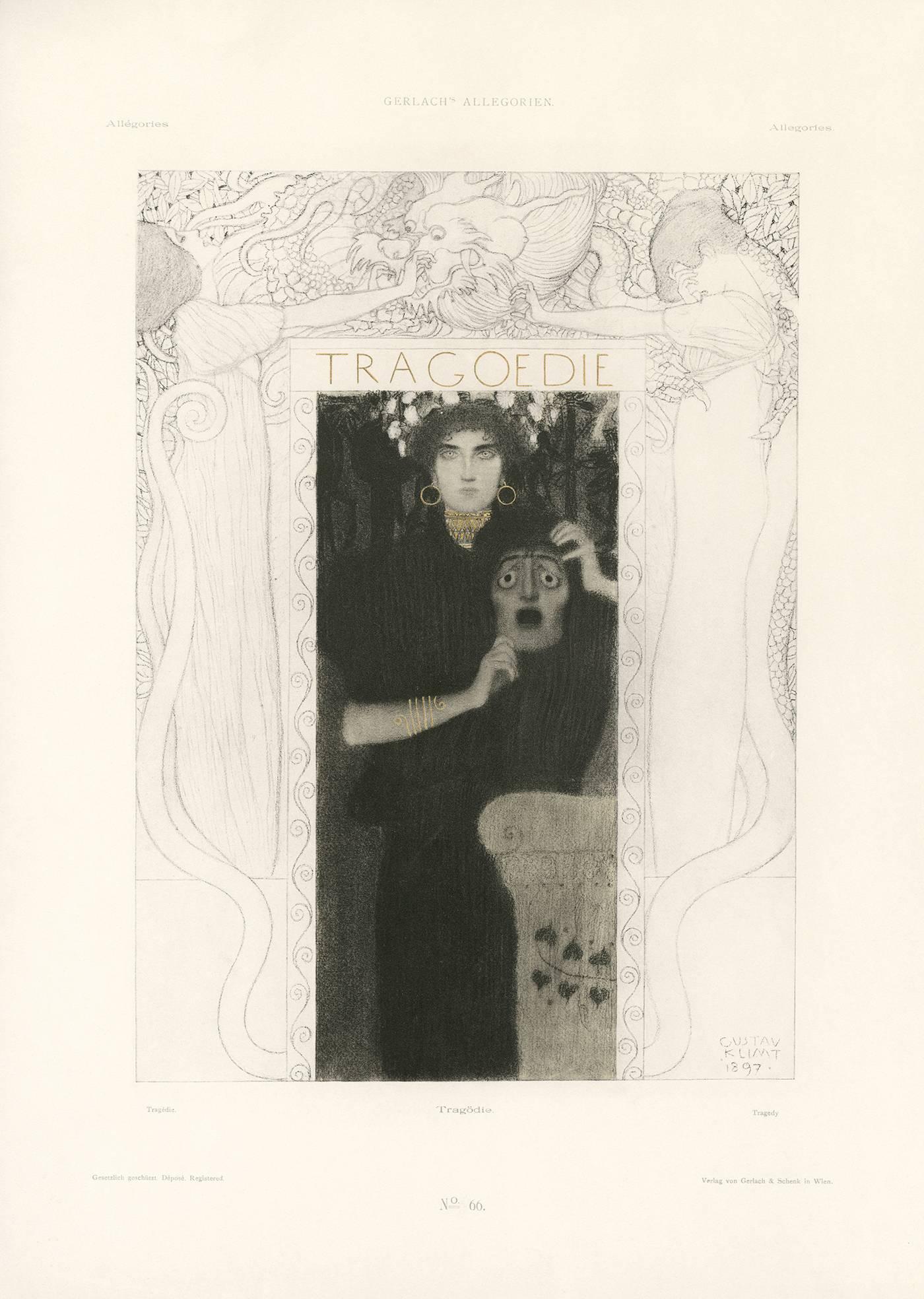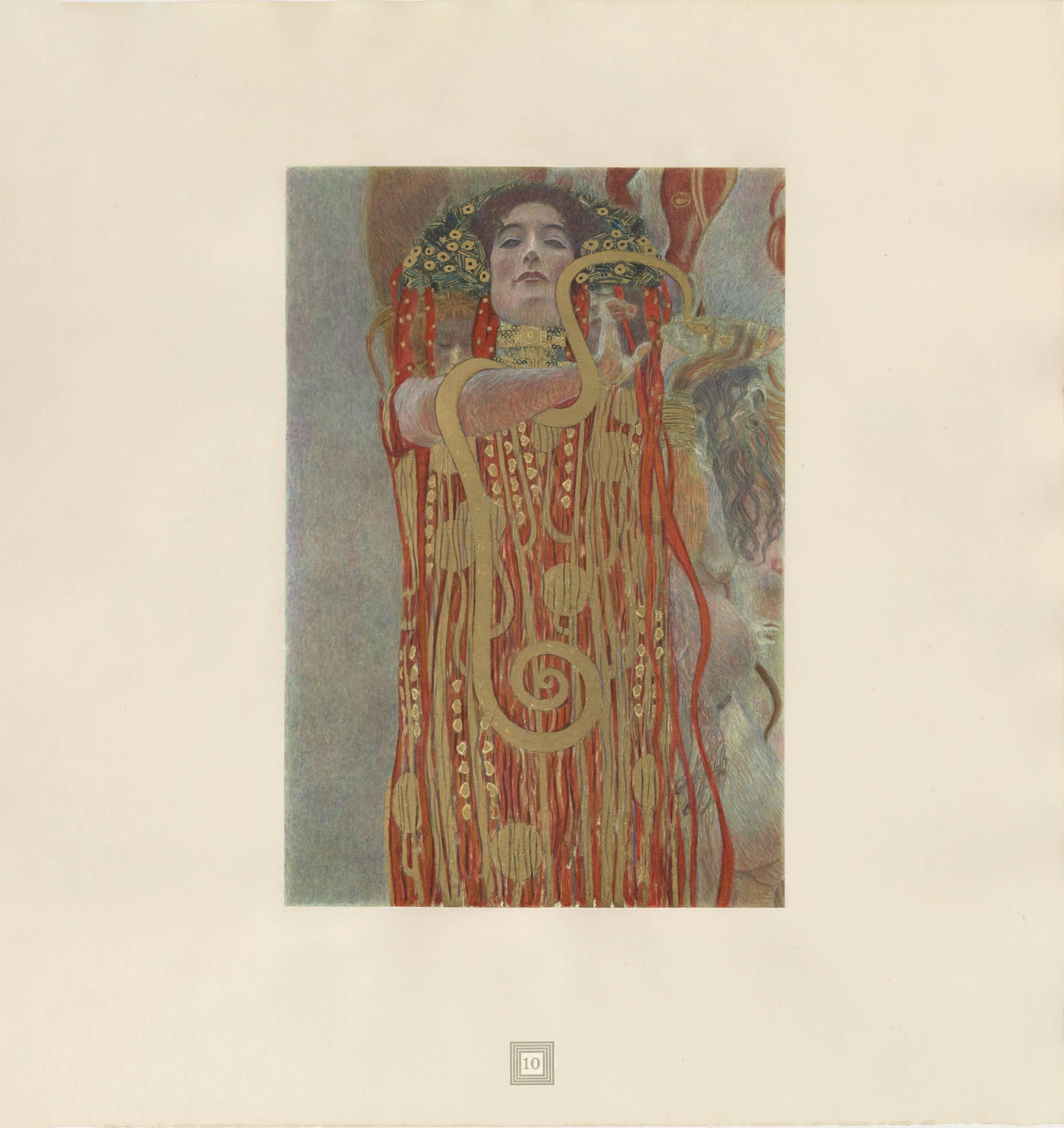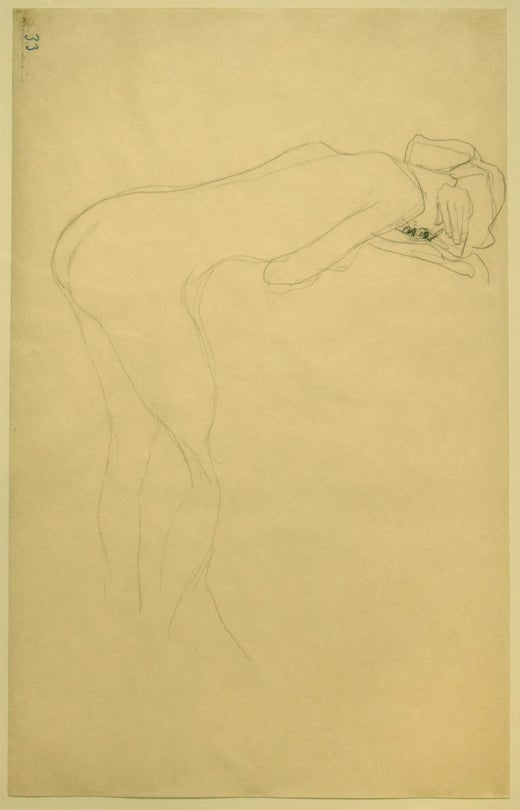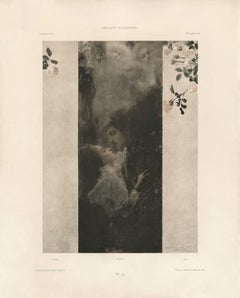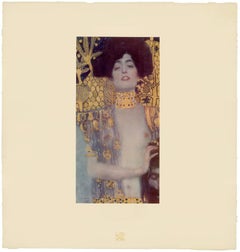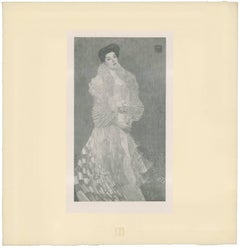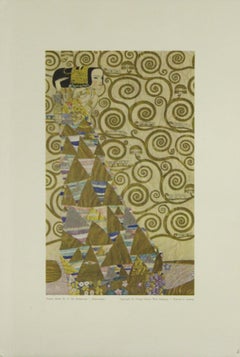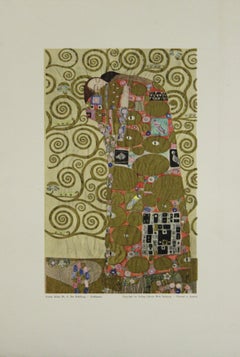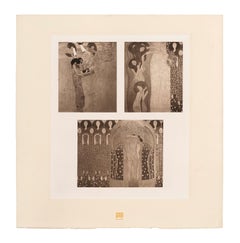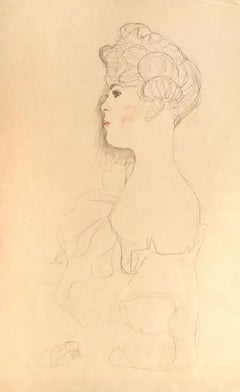Items Similar to Gerlach's Allegorien Folio, plate #53: "Junius" Lithograph, Gustav Klimt.
Want more images or videos?
Request additional images or videos from the seller
1 of 8
Gustav KlimtGerlach's Allegorien Folio, plate #53: "Junius" Lithograph, Gustav Klimt.1897
1897
$15,500
£11,939.40
€13,633.42
CA$22,114.24
A$24,200.21
CHF 12,691.90
MX$289,243.95
NOK 160,171.11
SEK 149,420.31
DKK 101,816.40
About the Item
Contributors to Gerlach & Schenk’s publications valued design and innovation in the graphic arts just as much as they examined allegories as subject matter for exploration. Here, Gustav Klimt explores the harmonious relationships of geometry, using the square format for the first time. This 1896 design as an allegory for the month of June exhibits many Jugendstil hallmarks. Fruiting plant motifs and a light, linear style creates a sense of lyricism to what appears to be caryatids who have come to life. These flanking female figures gracefully balance on their ionic bases. The drapery of their flowing tunics softly stirs and undulates with their movement which brings the viewer’s eye optimistically up and center as the caryatids extend their arms out to clasp a branch of ripe pears. Just as there is a harmony in the relationship of the square to the rectangular sections in Klimt’s composition, there is consonance in their gestures. There is concordance in the link between geometry and the use of classical subject matter. However, Klimt was not satisfied with a full reliance upon Classicism; he was interested in creating a modern format for the modern era. Klimt continues along this vein of exploring the possibilities of the graphic medium by closely cropping the profile at center. He renders the image much like a photograph made with the aid of a telescopic lens. Here we see a saturation of color, a more painterly approach to printmaking. The decorative gold tiara finds complimenting echoes in the entire work, at the centers of the daisies and, by degrees, the fair skin against the glowing gold-toned background. For all of the emphasis placed upon the various effects of these formal elements, Klimt pushes further to find an allegory worthy of his time. Klimt gives the viewer an intimate psychological portrait of life ripe with possibilities, in the June of life.
ALLEGORIEN-NEUE FOLGE, 1897, published by Gerlach & Schenk Verlag fur Kunst und Gewerbe, Vienna, was a serial publication that began as Allegorien und Embleme in 1882. A sourcebook of inspiration made for and by young Viennese artists became something of a galvanizer of the modernist movement in Vienna with its new series issued in 1897. Its publisher, Martin Gerlach, plucked young artists and even art students who were exploring the newest techniques in drafting and graphic design to contribute to his publication. This was the beginning of a long-standing relationship. In the forward to the 1897 edition, Gerlach, expounds upon the new approach which consciously shifted away from historicism rooted in the conservative Academy. Instead, the artists were encouraged to explore new subjects and new ways to present them. More unconventional subjects such as: Wine, Love, Song, Music and Dance; Arts and Sciences; the Seasons and their corresponding activities, sports and amusements, breathed fresh, modern life into the allegorical genre. Specific topics that were explored ranged from Electricity and new concepts of Work and Time to Bicycle Sport and the Graphic Arts.
Essentially, the publication served as a portable forum for sharing and disseminating new ideas. Two contributors, a young Gustav Klimt and an even younger Koloman Moser, likely met through their involvement with Allegorien and found themselves to be like-minded artists. As a result, the two allied with other artists and architects in a dramatic and formal break with the established, conservative state-run arts (Kunstlerhausgenessenschaft) to found the Vienna Secession the very next year in 1898. Klimt became the Secession’s first President; while Moser, in 1903, expanded the group from a solely exhibition-based focus to include a workshop by co-founding the Wiener Werkstatte. Gerlach went on to publish some issues of the Secession’s journal called Ver Sacrum as well as postcards designed by its members.
The Viennese art critic, Joseph August, called Gerlach the “Fuhrer der Moderne” (Leader of Modernism). The new 1897 series, featuring its innovative and modern art plates, is an important art historical document as it played a significant role in helping shape the avant-garde art movement in Vienna which exploded onto the scene with the formation of the Vienna Secession in 1898. Individually, the plates are important works; they are noteworthy for their stylistically and thematically modern approach. These plates offer some of the
earliest examples of Viennese avant-garde and Secession artists’ published work.
- Creator:Gustav Klimt (1862 - 1918, Austrian)
- Creation Year:1897
- Dimensions:Height: 17.25 in (43.82 cm)Width: 13.75 in (34.93 cm)
- Medium:
- Movement & Style:
- Period:
- Condition:See "Essential Klimt" by Laura Payne, 2001; pg 55.
- Gallery Location:Palm Beach, FL
- Reference Number:1stDibs: LU46731464333
Gustav Klimt
Gustav Klimt was an Austrian symbolist painter and a prominent member of the Vienna Secession movement. Klimt's primary subject was the female body and his works are mostly erotic in nature.
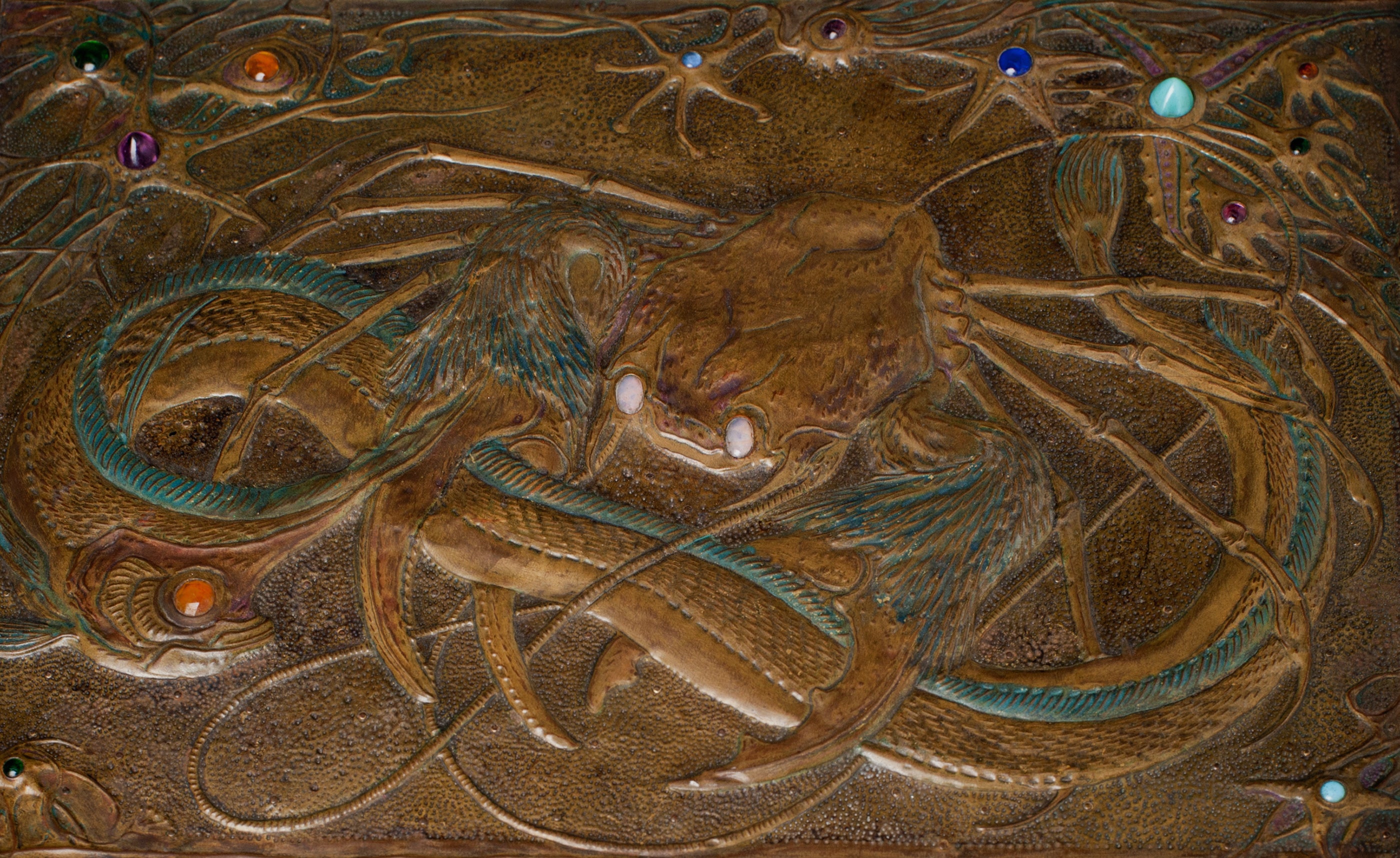
About the Seller
5.0
Vetted Professional Seller
Every seller passes strict standards for authenticity and reliability
Established in 2013
1stDibs seller since 2016
102 sales on 1stDibs
Typical response time: 7 hours
- ShippingRetrieving quote...Shipping from: Palm Beach, FL
- Return Policy
More From This Seller
View AllGerlach's Allegorien Folio, plate #58: "Sculpture" Lithograph, Gustav Klimt.
By Gustav Klimt
Located in Palm Beach, FL
As an artist trained in the applied arts, Gustav Klimt valued all forms of art, including the graphic arts. This final design from 1896 for inclusion in Allegorien published by Gerlach & Schenk demonstrates respect for artistic precedent and for a wide range of media and technique. The publication was printed in an unknown number of copies. Klimt’s rendering in latin of the title, “SCVLPTVR.,” with three-dimensional effect on the wall, is a figurative allusion to this medium as well as a literal reference to Ancient Rome. By doing the same with his signature and date in roman numerals on the right hand side of the image, Klimt places himself, The Artist, firmly in this linear and legitimizing context of art history and as its modern standard-bearer. Playing on Classical mythology and the story of Pygmalion, in which a statue comes to life, Klimt presents his modern Venus holding an apple. Klimt’s Venus exhibits a curvilinear softness; there are no angles. Klimt deftly shows the possibilities in a graphic image to give life to dark, wavy hair and tenderness to swelling breasts and belly. To further emphasize the allegory of thriving modern art, he contrasts his Venus with the cold, hard ancient classical head whose eyes are vacuous and whose hair is but a stylized mass of curls. Klimt’s living Venus stands in front of the large bust and large classical pillar upon which is a sculpture of a Sphinx and a Greek Attic bust. As if a gallery to represent sculpture’s “best of” through the ages, the upper horizontal panel includes bust depictions in marble, cast metal and wood...
Category
1890s Vienna Secession Figurative Prints
Materials
Lithograph
Gerlach's Allegorien, plate #46: "Love" Lithograph, Gustav Klimt.
By Gustav Klimt
Located in Palm Beach, FL
Klimt’s association with Martin Gerlach dates back to the early 1880s when Gerlach and Schenk published their first edition of Allegorien und Embleme. By the mid-1890s, they were pla...
Category
1890s Vienna Secession Figurative Prints
Materials
Lithograph
H.O. Miethke Das Werk folio "Judith I" collotype print
By Gustav Klimt & K.K. Hof-und Staatsdruckerei
Located in Palm Beach, FL
Judith I, no. 9 from the second installment of Das Werk Gustav Klimts
Much like his treatment of the Classical personage, Danae, from Greek mythology, Klimt’s depiction of Judith takes an Old Testament character, a heroine who avenges the death of her husband by killing an Assyrian king, and firmly positions her in his present-day Vienna. His multicolored collotype rips the canvas from its gilded frame which directly references the subject with its title: “Judith und Holofernes”. Now in print form, Judith, holding the severed head of a male in murky shadow, is the ultimate Viennese femme fatale. Her likeness is unmistakably similar to a former lover of Klimt’s and famous Viennese soprano, Anna von Mildenburg. Though his allusion to ancient Assyria is apt, Klimt literally lifted the gold patterned background’s design motif from a relief detail from Sennacherib’s Palace displayed in a London museum. His context then is contemporary. In a sensual and sexually powerful tour de force, Klimt’s Judith...
Category
Early 1900s Vienna Secession Figurative Prints
Materials
Paper, Ink
H.O. Miethke Das Werk folio "Portrait of Hermine Gallia" collotype print
By Gustav Klimt & K.K. Hof-und Staatsdruckerei
Located in Palm Beach, FL
DAS WERK GUSTAV KLIMTS, a portfolio of 50 prints, ten of which are multicolor collotypes on chine colle paper laid down on hand-made heavy cream wove paper with deckled edges; under ...
Category
1910s Vienna Secession Figurative Prints
Materials
Paper
Gerlach's Allegorien, plate #66: "Tragedy" Lithograph, Gustav Klimt.
By Gustav Klimt
Located in Palm Beach, FL
Gustav Klimt created this image for inclusion in Gerlach & Schenk’s Allegorien the year before he formed the Vienna Secession. While this design is similar to his other inclusions, L...
Category
1890s Vienna Secession Figurative Prints
Materials
Lithograph
Max Eisler Eine Nachlese folio “Hygieia” collotype print
By (after) Gustav Klimt
Located in Palm Beach, FL
After Gustav Klimt, Max Eisler #10, Ausschnitt aus dem Bilde “Medizin”; multi-color collotype detail from Medicine, one of the faculty paintings for the Uni...
Category
1930s Vienna Secession Figurative Prints
Materials
Paper
You May Also Like
Expectation-Metallic Poster. Printed in Austria
By Gustav Klimt
Located in Chesterfield, MI
Poster. Measures 16 x 11 inches and is Unframed. Good/Fair Condition-signs of wear consistent with age and handling.
Category
Late 20th Century Portrait Prints
Materials
Lithograph
$140 Sale Price
20% Off
Fulfilment-Metallic Poster. Printed in Austria
By Gustav Klimt
Located in Chesterfield, MI
Poster. Measures 16 x 11 inches and is Unframed. Good/Fair Condition-signs of wear consistent with age and handling (please see secondary images for details).
Category
Late 20th Century Portrait Prints
Materials
Lithograph
$140 Sale Price
20% Off
Beethoven Frieze (detail) by Gustav Klimt, Das Werk collotype, 1908-1912
By Gustav Klimt
Located in Chicago, IL
Original collotype created from a detail of Gustav Klimt’s Beethoven Frieze. Published and edited by Verlag H.O. Miethke and printed by k.k. Hof- und Staatsdruckerei, Vienna, in an e...
Category
Early 1900s Vienna Secession Prints and Multiples
Materials
Paper
Sketched Portrait - 1910s - Original Collotype Print by Gustav Klimt
By (after) Gustav Klimt
Located in Roma, IT
Sketched Portrait is a vintage, beautiful, and rare collotype from “Gustav Klimt: Fünfundzwanzig Handzeichnungen”, a limited-edition collection of 25 monochrome and two-color collotypes after drawings by Gustav Klimt.
Published by Gilhofer and Ranschburg, Vienna, July 1919, just one year after Klimt...
Category
1910s Modern Portrait Prints
Materials
Black and White
Gustav Klimt, Medicine, from The Work of Gustav Klimt, 1918 (after)
By Gustav Klimt
Located in Southampton, NY
This exquisite heliogravure and collotype after Gustav Klimt (1862–1918), titled Medizin (Medicine), from the folio Das Werk von Gustav Klimt (The Work of Gustav Klimt), originates f...
Category
1910s Symbolist Figurative Prints
Materials
Lithograph
$23,996 Sale Price
20% Off
Free Shipping
Death and Life by Gustav Klimt, Das Werk lifetime collotype, 1908-1912
By Gustav Klimt
Located in Chicago, IL
Original collotype created from Gustav Klimt’s Death and Life, painted in 1908. Published and edited by Verlag H.O. Miethke and printed by k.k. Hof- und St...
Category
Early 1900s Vienna Secession Prints and Multiples
Materials
Paper
